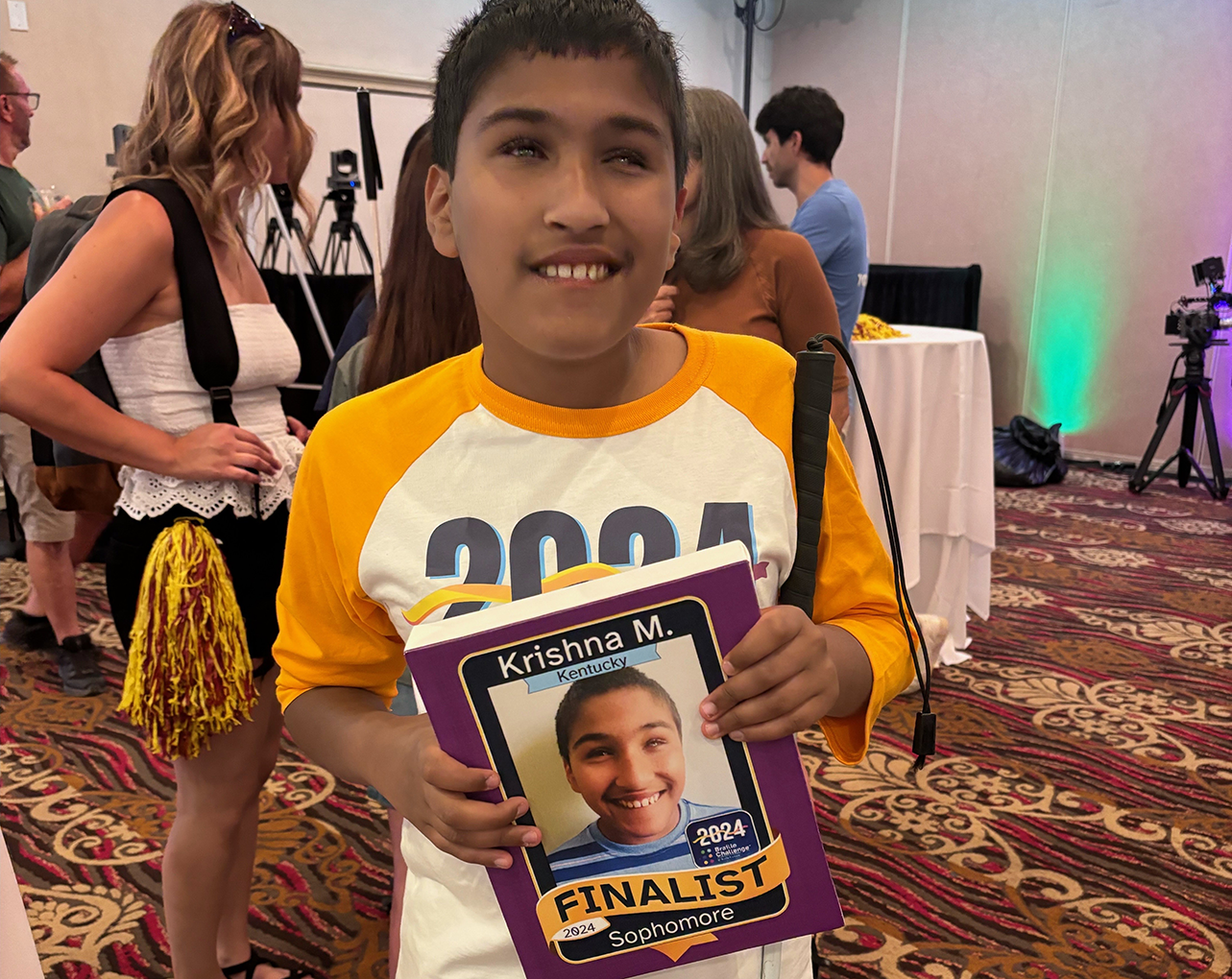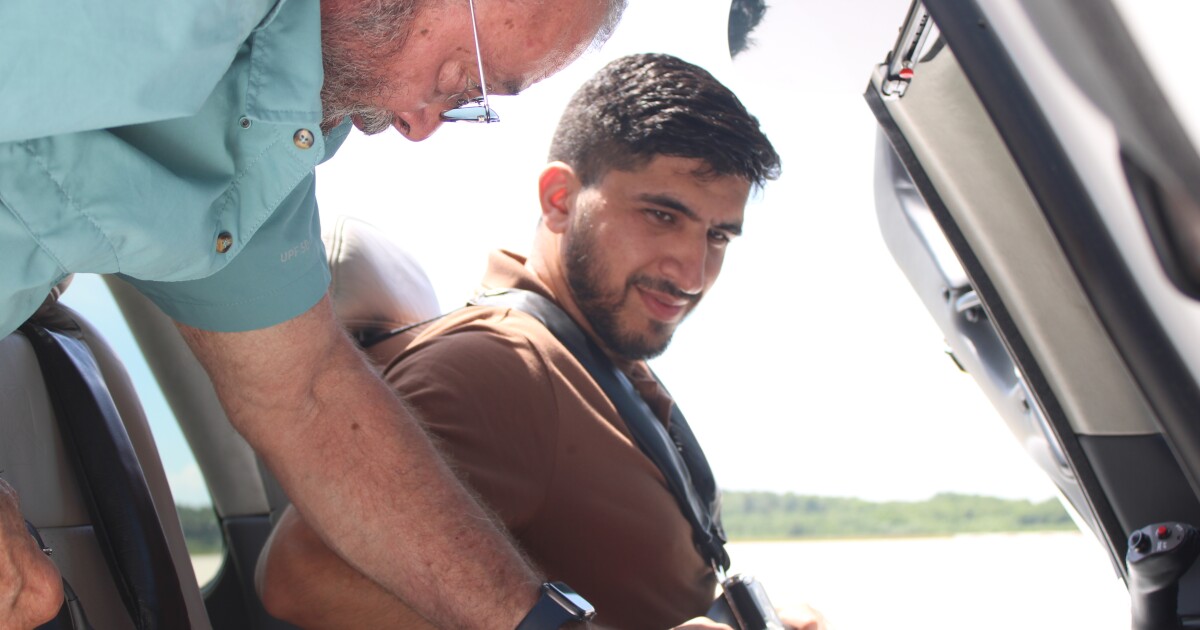Oregon
One of Oregon’s most ‘iconic’ restaurants has closed unexpectedly

Nick’s Italian Cafe, the James Beard Award-winning Willamette Valley restaurant that has hosted aspiring Oregon winemakers and visiting wine lovers for generations, has closed after 46 years in downtown McMinnville, the restaurant announced Friday.
The restaurant and its neighboring deli are for sale, and “the hope is for someone to ladle the minestrone soup for many years to come.”
As recently as July 2, Nick’s took to Facebook to seek new hires for its waitstaff team, and Google still lists its operating hours as 5 to 9 p.m., Tuesday-Saturday. But two days ago, the restaurant announced a “temporary closure” on Facebook, and it now says it will not reopen in its “current form.”
In a McMinnville News-Register article posted in full to Nick’s Facebook page Friday, a Peirano family member is quoted as saying that “the compounding challenges of running a business these days” as a primary reason for the closure, while calling it a “difficult decision.”
With little more than his grandmother’s pasta recipes to his name, Nick Peirano moved from the San Francisco Bay Area to Oregon to take over the old Cafe Dinette space, 521 N.E. Third St., in 1977. Unbeknownst to him, the surrounding hills were filled with young winemakers whose dream of making wines to compete with the best of Burgundy was almost as far-flung as the idea of opening a top Italian restaurant in McMinnville.
When it opened, “it was the best restaurant north of San Francisco,” the late Oregon pinot pioneer David Lett told Saveur magazine in a 2008 feature. (In those early days, fellow Oregon wine trail blazer Dick Erath recalled Peirano calling up vintners to tell them a customer had enjoyed a bottle of their wine, and would love to meet them.) The idea for a premier Willamette Valley wine event began with an informal gathering at Nick’s in 1985. The International Pinot Noir Celebration, which starts today, was first held two years later.
Nick’s daughter, Carmen Peirano, took over day-to-day operations at the restaurant in 2007, updating the menu with a wood-fired pizza oven and house-made charcuterie while keeping the pasta dishes — including the Dungeness crab and pine nut lasagna — and the beloved pesto-finished minestrone in place.
In a 2010 review in The Oregonian, Roger Porter described Nick’s Italian cafe as one of Oregon’s most “iconic” restaurants, while writing that “under Carmen’ bright stewardship it’s once again the place that impressed the region so many years ago.”
In 2014, Nick’s Italian Cafe was given a James Beard America’s Classics award, which acknowledges “restaurants that have timeless appeal and are beloved for quality food that reflects the character of their community.” Only one other Oregon restaurant — The Original Pancake House in Southwest Portland — has received the honor.
— Michael Russell; mrussell@oregonian.com
Our journalism needs your support. Please become a subscriber today at OregonLive.com/subscribe

Oregon
Less Wildfire for Oregon this Year, State Stil too Low on Firefighters – The Corvallis Advocate

Oregon is likely to face fewer big wildfires this summer than in previous years, but a lack of rural housing, coupled with unstable and often low pay, continues to create firefighter workforce challenges across the state and region.
That was a big part of the message from state and federal fire and emergency response officials, who discussed this year’s fire outlook and what they need at a meeting Monday at the Northwest Interagency Coordination Center. The Portland-based center is part of a larger wildfire prevention and response network that includes nine state and federal agencies.
In particular, they said they need more investment in technology – including on satellite detection – along with consistent pay increases for wildland firefighters and stable housing options. Jeff Fedrizzi, the state fire management officer for the federal Bureau of Land Management, said many wildland firefighters live out of their cars while they’re on the job.
“We have folks living in the back of their rigs. They go to work and fight fires and camp out for two weeks and then come back and camp out,” he told Oregon’s U.S. Sens. Ron Wyden and Jeff Merkley and Rep. Suzanne Bonamici, who hosted the meeting. All three are Democrats.
The wildfire season in the Northwest can last from May through October but typically the season is most intense from July to September. During that time, firefighters may end up fighting several big blazes at once, and that strains resources as officials share and coordinate equipment and manpower.
This year, the U.S. Forest Service has about 80% of the firefighters it needs in Oregon and Washington with 20% of jobs unfilled, according to Ed Hiatt, assistant director of operations for the regional office of the Service. He said it’s been like that for about the last six years even with a recent bonus in pay.
Federizzi and officials from the Oregon Department of Forestry, Oregon State Fire Marshal and U.S. Forest Service praised the $20,000 supplemental pay bumps many wildland firefighters have received since 2021 under the Infrastructure Investment and Jobs Act, but they said the pay supplement needs to be made permanent and pay scales need to be updated. The supplemental money is only authorized through September of this year while agencies wait for a new pay scale to be finalized.
Wyden, Merkley and Bonamici committed to ensuring firefighter pay will continue to go up and to vote for bills investing in rural and wildland firefighter housing.
Summer conditions
Due to a wet El Niño winter, much of the state has had lower than normal average temperatures over the last three months compared to the 30-year average according to Jon Bonk, a meteorologist at the Northwest Interagency Coordination Center. In central Oregon and east of the Cascades, forecasters expect that temperatures will be above average and precipitation will be below average by September. Between mid-July and September, they also said that a La Niña weather system will move over the state creating warmer, drier conditions, mostly impacting eastern Oregon and Washington.
Investing in detection
The number of cameras able to detect wildfires in the state have grown, and Oregon is likely to surpass Nevada as the state with the second most cameras in the U.S., officials said.
Electric utilities are also setting up their own cameras, according to Chris Cline, fire protection division chief at the Oregon Department of Forestry. The department is deploying a new night vision helicopter around the Medford area, according to Cline, something done in California before but new to Oregon.
Still, more money is needed for federal agencies to connect with state and local agencies and share data, said Mariana Ruiz-Temple, state fire marshal, who advocated investment in a wildfire fusion center that can bring all stakeholders together.
Hiatt told the lawmakers that inflation is driving up the cost of a lot of the equipment they need.
“We can’t keep up with the increasing costs,” he said. Some parts needed for firetrucks can’t be delivered for several years, according to Hiatt. “By the time you’re paying that bill, it costs 50% more than when you originally we’re putting in the order. We’re spending a large percentage of our preparedness budget just on equipment.”
by Alex Baumhardt, Oregon Capital Chronicle
Oregon
Missing Native American women an 'emergency' but progress limited, Oregon report finds • Oregon Capital Chronicle

Carolyn DeFord was hoping for change. She was hoping for answers. She’s been hoping for 24 years.
On Feb. 18, 2019, DeFord was making the long trip from her home in central Washington to Oregon — a drive she had made many times to search for her missing mother, Leona Kinsey, who disappeared from her home in La Grande in 1998. This time the drive was different. DeFord was traveling to testify in the Oregon Capitol.
A first-of-its-kind bill in Oregon would declare missing Native American women a statewide emergency, launch an investigation into the crisis and produce a report to decipher the underpinnings of the problem. DeFord, a citizen of the Puyallup Tribe of Indians, thought it could make a real difference.
“I went just hoping to have a couple of minutes to share,” DeFord said.
She discussed the story of her mother’s disappearance, how she seemed to vanish. The coffee pot was on, the beloved dogs in the yard — but Kinsey was gone. Nearly 25 years later, Kinsey remains missing and police have made no arrests related to her case.
The 2019 bill, sponsored by Rep. Tawna Sanchez, passed, but it hasn’t made the difference DeFord hoped.
Five years after DeFord made that drive to Salem, there have been state and federal reports examining the problem of missing and murdered Indigenous people, a series of proposed improvements and a handful of public events and photo ops. But there has been little progress on the main recommendations to improve data management and information sharing among law enforcement and the public, and to improve trust between tribal communities and law enforcement.
Key leaders have had little to say about the lack of progress. Oregon Gov. Tina Kotek — who was speaker of the House when DeFord testified — said in December that she had not had a conversation about the issue since she was in the Legislature or read the four-year-old recommendations of a task force in the report bearing her signature.
“I’m just brutally upfront, I have not read those recommendations,” Kotek said. “To be honest, I haven’t had a conversation about this topic, probably since the Legislature. I know in 2019, I was supportive of the work that Representative Sanchez was doing. The Legislature did move forward on the recognition of the issue, how serious it is, asked for a report. And my guess is, it kind of got lost in the COVID conversation.”
Despite defining the ongoing disappearances of Native American women as a “statewide emergency,” the pandemic sidelined a “listening and understanding” tour to gauge the scope of the crisis. There is still no centralized system for sharing data or coordinating investigative efforts, and no single agency or official is accountable for implementing the report’s recommendations. Tribal advocates criticize the state for including few Native American voices in their efforts, and they emphasize that the cascading effects of long-standing failures of trust between Indigenous people, government systems and law enforcement remain.
Desiree Coyote, a family violence prevention manager for the Confederated Tribes of the Umatilla Indian Reservation and an anti-trafficking and missing and murdered Indigenous persons advocate, said the process is failing Indigenous communities. Coyote said that after 25 years of advocating for Indigenous women, she’s not surprised by the lack of awareness.
“The United States continuously makes us invisible, systems continually don’t include us at the table, and that continues to make us invisible,” Coyote said. “Could be lack of time, lack of energy, could be that none of the people surrounding (Kotek) and … addressing what’s going on in Oregon is keeping her up to date on tribal nations. So, I’m not surprised, I’m not angry — it’s just what it is.”
Sanchez, D-North Portland, said she’s disappointed that there hasn’t been more concrete progress. Sanchez, who is the second Indigenous person to serve in the Oregon Legislature, said she is considering proposing legislation to press forward on efforts to improve data collection and coordination.
“For now, (addressing missing and murdered Indigenous people) will have to be legal issues around how we do the work, how criminal justice responds to communities of color — but the long term, the deeply embedded systemic racism and oppression in this country, has to be addressed at some point,” Sanchez said. “It’s like picking with one little pickax at an iceberg — it’s going to take some time.”
Identifying the crisis
In the past decade, there’s been growing awareness and acknowledgment of a long-standing crisis — the disproportionate disappearances and murders of Indigenous people, particularly women.
Nationally, estimates of unsolved cases of missing and murdered Indigenous people number in the thousands. For Indigenous females between the ages of 1 and 45, homicide is one of the top 10 causes of death. More than four in five Native American and Alaska Native people report experiencing violence in their lifetimes, with more than 30% reporting violence in the prior year, according to a 2022 study by the National Institute of Justice.
Oregon’s legislation called for the Oregon State Police to conduct a study on “how to increase and improve protective, responsive and investigative resources and systems for reporting, identification, investigation and rapid response to future and past cases” of missing and murdered Indigenous women in Oregon.
The bill passed unanimously — somewhat of a rarity in the often-fractured Oregon Legislature — and the report was published in September 2020.
The report made four major recommendations: establishing a partnership between Oregon law enforcement agencies and the federal task force Operation Lady Justice to address cold cases and identify patterns and links between cases; providing education to officers on Native American history, cultural awareness and jurisdictional complexities; strengthening partnerships between law enforcement and Indigenous communities; and improving data collection and information sharing among agencies.
Oregon State Police has complied with some recommendations in the report. OSP appointed Capt. Cord Wood, who participated in the work group that produced the report, as coordinator for the agency’s response.
Wood said Oregon is “doing a lot of things right” when it comes to addressing missing and murdered Indigenous people and that data gathering is improving. Wood said OSP sees higher numbers of missing Indigenous people today than at the time of the report because increased cooperation with tribal law enforcement leads to more reports to OSP.
In 2023, OSP hired its first tribal liaison, Glendon Smith, a citizen of the Confederated Tribes of Warm Springs, to work with tribes, including on the issue. Smith did not respond to requests for an interview with InvestigateWest.
The Department of Public Safety Standards and Training, which covers all county, local, state and tribal law enforcement officers in Oregon, began offering training on jurisdictional responsibilities and working with tribal populations to all new officers in 2021. In that year, OSP offered a one-time, one-day training program on Indian Country policing and jurisdictional considerations to all sworn staff.
Smith is conducting visits with each of the nine federally recognized tribal governments within Oregon’s geographic boundaries, but not specifically to discuss missing and murdered Indigenous people or meet with community members.
Wood points to Smith’s hiring as the agency’s primary effort for improving communication with tribal communities and governments.
In a June 13 statement to InvestigateWest in response to her December comments, Kotek’s office emphasized her recent declaration of May 5 as Missing and Murdered Indigenous Persons Awareness Day and the efforts of Kotek’s tribal affairs director, Shana McConnville Radford, a citizen of the Confederated Tribes of the Umatilla Indian Reservation. Kotek’s office says Radford participates in a federal MMIP work group and is tasked with “understanding where the state of Oregon currently is — across the enterprise — as it relates to Murdered or Missing Indigenous People (MMIP), what needs exist, and where to get engaged.”
The year after the Oregon report was published, the U.S. Attorney’s Office produced an expanded report on the problem in Oregon, including people identified as male, and found similar problems — poor data makes the crisis impossible to quantify, enforcement agencies need to improve coordination and communication, and agencies need to strengthen and expand their relationships with Indigenous peoples and groups. The office’s regional coordinator for addressing the crisis was not available for an interview before publication.
Despite both reports, advocates on the ground say change moves at a glacial pace as working groups discuss the issues every few months.
Listening tour cut short
Coyote and others say that poor communication with tribal communities and the exclusion of Indigenous voices and tribal perspectives — some of the very problems worsening the crisis — were built into the preparation of the state report.
On May 19, 2019, Gov. Kate Brown signed House Bill 2625 into law, in a room filled with Indigenous community leaders and advocates dressed in red, the color associated with missing and murdered Indigenous women’s awareness.
To conduct the study mandated by the bill, the Oregon State Police convened a work group made up of members of primarily federal, tribal and Oregon law enforcement officers, in addition to state and federal lawyers, a federal judge, a medical examiner and Sanchez.
A key component of the effort was a “listening and understanding tour” with Native American community members to “grasp the breadth and magnitude of the crisis.”
The effort included two stops before a separate meeting in Pendleton, where an attendee highlighted that there were no community-based advocates in the work group. Coyote subsequently became the only Indigenous community member of the group.
Coyote said the most valuable information for the report came from the tour, though not all of the stops were advertised equally well, resulting in poor turnout at some sessions.
The listening tour’s law enforcement-dominant makeup posed further difficulties, given many Native American communities’ long-standing distrust of law enforcement, according to Coyote.
Eventually, the group held five listening sessions in late 2019 and early 2020 — one each at the Confederated Tribes of Umatilla Indian Reservation, the Confederated Tribes of Warm Springs Reservation, the Burns Paiute Reservation and the longhouses that are home to Native American student groups at the University of Oregon and Oregon State University — before the outbreak of the coronavirus pandemic halted it.
The report was published without visiting the remaining six federally recognized tribes within the geographic boundaries of Oregon or any urban Indigenous communities off of tribal lands.
Wood said there are no plans for future Oregon State Police-coordinated efforts to discuss the issue directly with tribal communities in a similar fashion as the abbreviated tour.
Sanchez, who sponsored the 2019 bill, acknowledged that the effects of the report fell short of the desired outcome.
“My hopes were a little bit broader than they ended up being, unfortunately,” Sanchez said. “I was really hoping that we would be able to work on a much more cohesive level with other states around building a data system.”

Pervasive distrust
The moment a person goes missing, critical questions arise for their loved ones — who can they trust and where can they get help?
For Indigenous peoples, this isn’t necessarily straightforward. If a missing person is Indigenous, filing a police report can be a complex and confusing process exacerbated by a historic distrust of law enforcement and negative perceptions of criminal investigations involving Indigenous peoples as both the victims and offenders — a finding echoed in the OSP report.
On tribal lands, investigations occur amid a complex jurisdictional patchwork that may involve local, state, tribal or federal law enforcement, which can leave family members confused about who to report their missing loved one to or which agency is responsible. Indigenous peoples face disproportionate violence at the hands of law enforcement, and a litany of historical abuses against Indigenous peoples by state and federal government agencies leaves many reluctant to trust, especially in the vulnerable state of looking for a missing family member.
Beyond confusion during the reporting process, the OSP report found that Indigenous community members didn’t expect to be taken seriously or believe that police would act.
The pervasive distrust contributes to witnesses’ reluctance to work with law enforcement for fear of the negative associations within their own communities of working with police. Speaking out is also daunting — several family members of missing Indigenous peoples in Oregon declined to speak with InvestigateWest for fear of negative impacts on their loved ones’ case should they make unfavorable characterizations of police efforts.
This means Indigenous peoples often primarily rely on their fellow community members in the search for a missing loved one.
Coyote said that she advocated, in both the state and federal work groups she is a part of, for the inclusion of community-based tribal advocates to be directly involved in addressing missing and murdered cases as they are reported and investigated, but that she was ignored.
“When we have to rely on law enforcement who have been as bad as they are (during) our entire living experiences, since the great United States, then how can we expect them to do right by us now with the current federal and state laws?” Coyote said.
Coyote is a part of a work group under the U.S. Attorneys Office’s missing and murdered Indigenous persons coordinator, Cedar Wilkie Gillette, and the assigned assistant U.S. attorney, Tim Simmons.
During one work-group session in late 2023, she felt she was ignored when she asked how many members of the work group made an effort to speak with community members about the problem.
“So many law enforcement officers … aren’t in the community and talking about MMI and what we’re doing with this,” Coyote said. “Not in the community about arresting people, not in the community talking to tribal leaders.”
Simmons suggested forming a subcommittee to discuss community-related issues. Coyote said the discussion process has been frustrating and slow.
“Like six months’ work and we’re still addressing whether law enforcement needs to be in community or not,” Coyote said. “We’ve gone nowhere in regards to community issues, we’re still just doing law enforcement talking to law enforcement. It’s kind of disappointing.”
Wood, the OSP coordinator, said the law enforcement groups are working to build strong relationships with Native American communities.
“I think the trust is an ongoing, continuous process, right?” Wood said. “Trust is built on relationships, and you have to continue to grow and meet those relationships to keep them going. So I don’t think the work ever stops.”

Sketchy data
The 2020 OSP report identified poor and inconsistent data collection and sharing methods as a major barrier to determining the true scope of the crisis. The methods for collecting crime data and information across local, state, tribal and federal agencies on missing Indigenous persons cases were inconsistent or not occurring at all.
There is no centralized database to house information regarding missing Indigenous peoples — a fact that law enforcement, community advocates and legislators agree is a problem. As a result, it’s impossible to definitively determine how many Indigenous people in Oregon are missing.
Both the state and federal reports attempted to quantify the problem in Oregon while noting flaws in the data.
The Oregon State Police report included state and federal data from Jan. 23, 2020. It found 13 active missing persons cases on that date. The report did not request data from individual tribes.
The federal report included all missing Indigenous persons and identified 11 active missing cases at the time of its publication in February 2021. It also identified eight active murder cases of Indigenous victims.
One critical issue that persists in Oregon and across the nation is that of racial misclassification of Indigenous peoples when law enforcement complete a missing persons report. Racial misclassification further complicates accurate accounting of the numbers of missing Indigenous peoples.
Without centralized data, it’s impossible to determine any trends or links in disappearances, one of the key recommendations in the OSP report.
Sanchez notes that media coverage of missing Indigenous persons cases has improved in the Portland area, but not in other areas of the state.
“Those alerts about a missing person have gone out, and they are far more impactful than they have been past, but that doesn’t mean that it really has picked up in more rural areas in for tribal populations, nor is there a system that gives you feedback to let you know that someone either has been found or that there are concerted efforts being made,” Sanchez said.
Although collecting more centralized, uniform data wouldn’t be a panacea, lawmakers, law enforcement and advocates agree it would be an important step — one that Washington state has already taken.
Though a direct comparison is complicated by discrepancies in jurisdictional responsibilities between the two states, Washington has a more robust centralized data system. When an endangered Indigenous person goes missing, Washington state issues Amber Alert-like notifications, and it also produces weekly statewide reports listing active missing Indigenous persons cases across all jurisdictions.
Tim Addleman, chief of the Umatilla Tribal Police Department, said implementing a similar system in Oregon would be helpful in his work addressing missing people who often travel between different reservations and legal jurisdictions.
“I think (Washington) has done a very good job of getting all the information and putting it in a central spot and releasing it out,” Addleman said. “I think that would be very beneficial here in Oregon.”
Sanchez believes legislation mandating a better data collection system is the next necessary step, though she said she is still mapping out what that would look like. The North Portland representative said she is also part of ongoing efforts to build out a process for providing a broader display of notifications to tribal populations when a person goes missing.
While legislators and advocates agree Oregon needs to improve data gathering on MMIP, how the data would be handled and used is a matter of debate. Indigenous advocates say a shift toward community-led efforts is essential to meaningfully address MMIP, as police-led initiatives are insufficient.
Wood notes the benefits of equitable information sharing capabilities for tribal law enforcement, the hiring of a tribal liaison and OSP’s 3-year-old Indian Country-specific education for officers as evidence of Oregon’s improvements, and that OSP is “pretty well hitting the mark” responding to the report’s recommendations.
“I would say that in Oregon, we really do a lot of things right,” Wood said.
Leona Kinsey
A challenge complicating law enforcement response in MMIP cases is the fact that disappearing isn’t a crime in and of itself — and reporting systems don’t necessarily take into account the vulnerabilities of a particular missing person. Without signs of foul play or criminal activity, investigative responses and resources are not robust.
Leona, who was initially misclassified as white after her disappearance, was a victim, not a perpetrator — which limited the initial response from law enforcement.
Although Oregon State Police and federal law enforcement both reviewed the case after DeFord’s testimony in Salem, there’s been no progress in the case.
DeFord, in collaboration with a missing persons’ advocacy organization, learned of multiple instances of communication delays between law enforcement agencies regarding the primary person of interest in her mother’s disappearance.
DeFord believes that major escalations in the investigation into her mother’s disappearance, like official searches for her mother’s remains, only occurred because of extensive advocacy on her mother’s behalf. She’s grateful for additional reviews of her mother’s case file, though they haven’t yielded answers yet.
“I’ve taken these answers and responses in her case for so long, as like, I’m grateful for peanuts, like throw me scraps, throw me crumbs and I’ll dance for you,” DeFord said. “I’ve just been so grateful for every little bit, and I’ve got to a place right now where I’m not ungrateful. But I’m also bitter.”
Oregon
2024 Oregon football schedule: When is Oregon Ducks vs. Washington?

Hey look! A familiar face on the 2024 Oregon football schedule! It’s even a regional matchup in the brand new era of the Big Ten.
Dan Lanning and the Oregon Ducks will get the distinct pleasure of welcoming the Washington Huskies to Autzen Stadium in Eugene as the 2024 Oregon football schedule (kinda) wraps up with its final regular season game (there should be more football after this, but it will be postseason type of stuff).
This is probably the perfect rivalry matchup for these two former Pac-12 teams who have migrated into the Big Ten. Despite both teams’ move to the Big Ten, this Pacific Northwest rivalry remains intact, adding a familiar and passionate element to Oregon’s new conference landscape.
Familiarity matters sometimes. And it should be fun to see how these two teams measure up against one another this year.
After all the success that Washington had a season ago, most of the key contributors from that College Football Playoff team (right along with the coaching staff) left Seattle for greener pastures in Tuscaloosa, Alabama.
So, it’ll be interesting to see what Jedd Fisch has assembled with the Washington Huskies in his first season in the Pacific Northwest.
It’s also just fun that this rivalry has been preserved. With this matchup coming at the end of the Oregon Ducks’ first Big Ten season, it offers a chance for Oregon to make a definitive statement about their place in the new conference. On top of that, it gives the Ducks a chance at revenge for the two losses last year that kept Oregon out of the College Football Playoff.
And, well, regional rivalries are great for this sport. We don’t need to justify that.
With the sort of expectations that Oregon has this year, and when considering all that has been lost from Washington’s roster and coaching staff, this is a great chance for the Ducks to put an exclamation point on what is hopefully a great 2024 Oregon Ducks schedule during the 2024 college football regular season.
But hey, rivalries get weird sometimes. It’s totally possible that happens here. I don’t necessarily expect it, but it’s college football.
-

 World1 week ago
World1 week agoProtesters in Brussels march against right-wing ideology
-

 Movie Reviews1 week ago
Movie Reviews1 week agoShort Film Review: Willow and Wu (2024) by Kathy Meng
-

 News1 week ago
News1 week agoA fast-moving wildfire spreads north of Los Angeles, forcing evacuations
-

 World1 week ago
World1 week agoAl-Qaeda affiliate claims responsibility for June attack in Burkina Faso
-

 News1 week ago
News1 week agoMass shooting at Rochester Hills splash pad: Everything we know
-

 Movie Reviews1 week ago
Movie Reviews1 week agoFancy Dance (2024) – Movie Review
-

 Politics1 week ago
Politics1 week agoTrump resurrects Biden's 'devastating' 1994 crime bill as he courts Black Detroit voters: ‘Super predators'
-

 World1 week ago
World1 week agoRussia sets date for closed-door trial of US journalist















